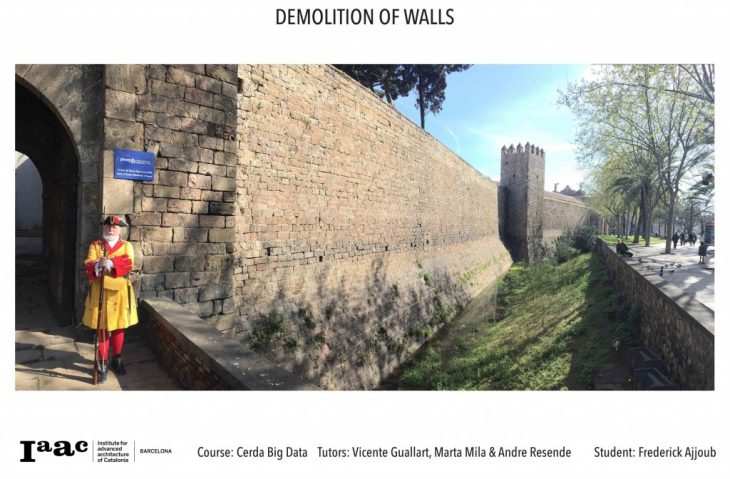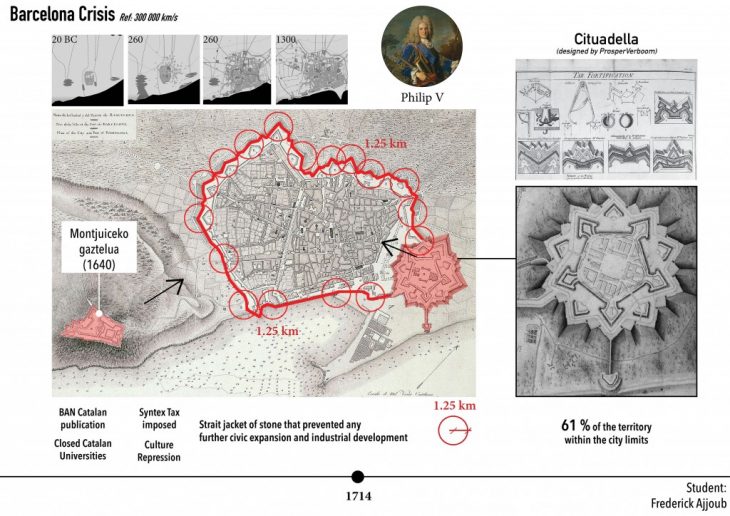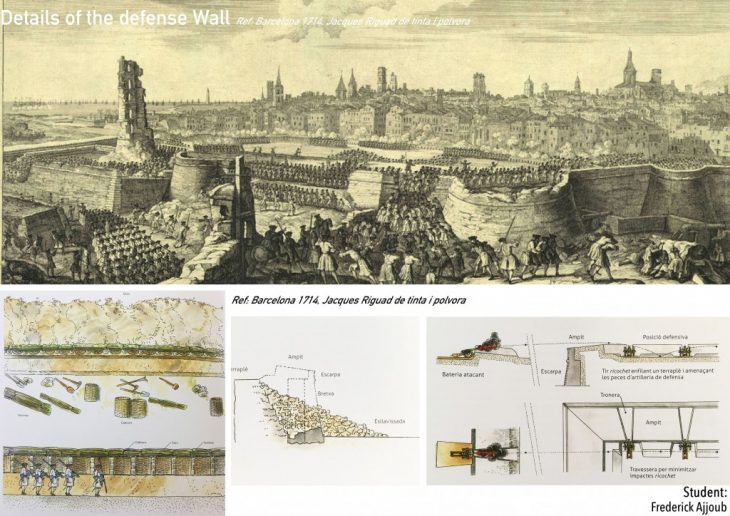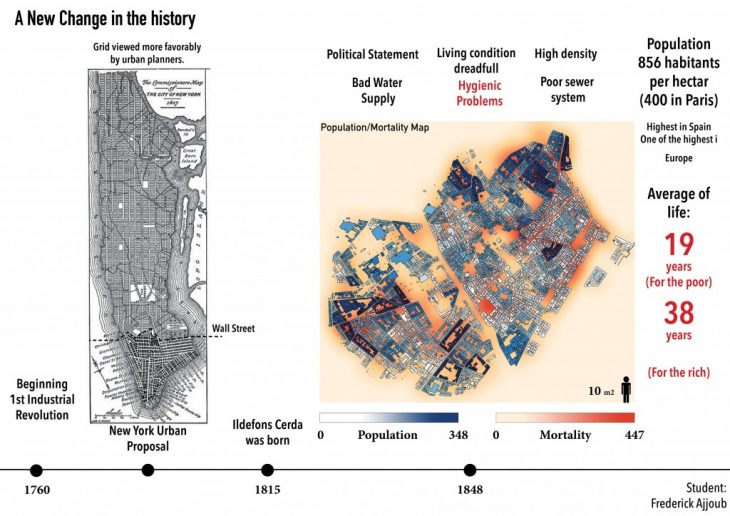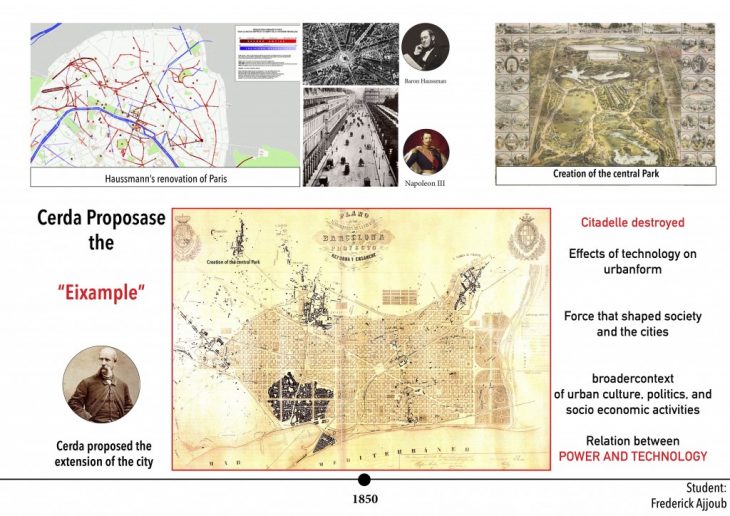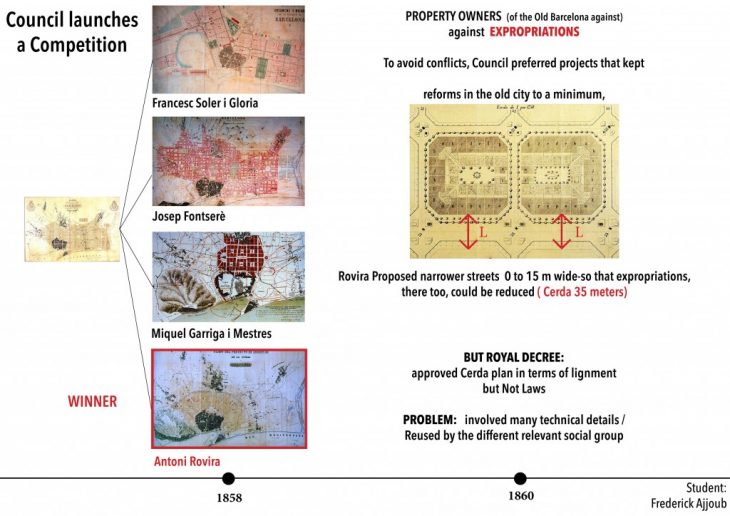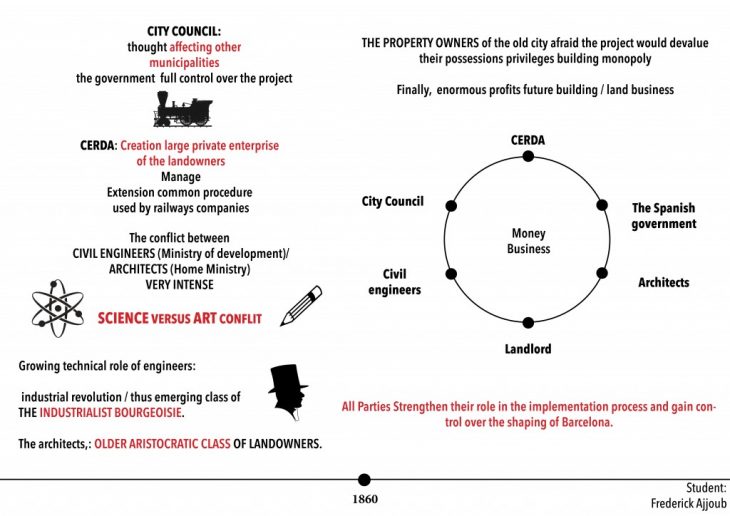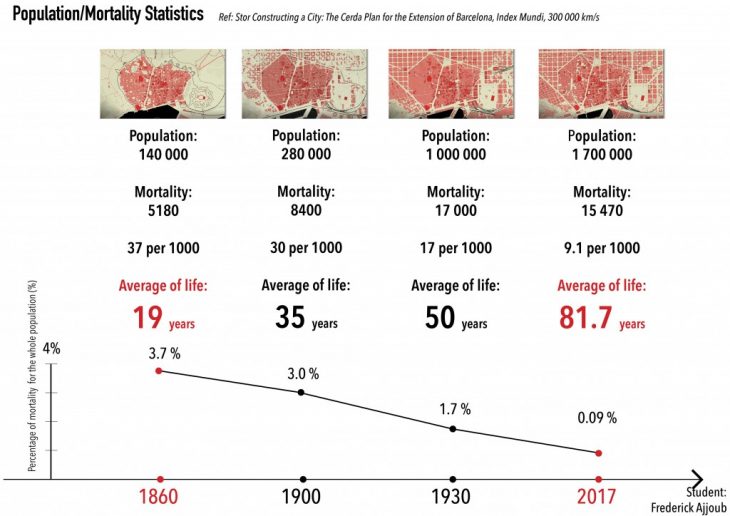Since the Roman empire, The wall of Barcelona was built to define the limit of the city. It was expending from the center of the city (Gothic) to the West hill and port from 20 BC to the 18th century.
At the beginning of the eighteenth century, Spain was immersed in a succession war between the Habsburgs and the Bourbons about the Spanish throne.
Barcelona, the capital of Catalonia, surrendered to Philip V in 1714 after thirteen months of brave and somewhat kamikaze resistance of its citizens.
An enormous military engineering project was launched to put the city under continuous surveillance of the Bourbon troops.
This firing range created a no-man’s land outside the walls covering almost 61 percent of the territory within the city limits. In the nineteenth century, with the walls still there, it was impossible to propose any idea without simultaneous- town-planning making neously an implicit political statement.
Living conditions in the city were dreadful.The population density, with 856 inhabitants per hectare, was the highest in Spain and one of the highest in Europe; the average population of Paris was, for instance, under 400 inhabitants hectare. This extremely high density, a bad water supply,and a poor sewer system made for atrocious conditions of hygiene. Different epidemics brokeout in 1834, 1854, 1864, and 1870- each time killing about3 percent of the population.
Between 1837 and 1847, the averagelife expectancy of men was 38.3 years among the rich classes and 19.7 among the poor. This is where the council decided to expend the city: Remove the walls.
The first project for the extension of Barcelona was designed by Ildefons Cerda, a Catalan civil engineer and former progressive deputy in the Spanish Parliament. But the new city council, appointed in 1856 as a consequence of a conservative turn in government, decided to charge a municipal architect Miquel Garriga to develop an alternate project.
In the same year, Haussmann was in charge toe renovate Paris and there was the creation of the Central Park in New York.
The controversial issues involved many technical details of the project and were used by the different relevant social groups: Cerda, the city council, the Spanish government,the civil engineers,the architects, and the landowners to strengthen their role in the implementation process and gain control over the shaping of Barcelona.
The economic issue: Cerda’s plan, with streets of 35 m wide, required many expropriations and, consequently, a huge amount of compensation payments according to the current law.
As a consequence, the city council, trying to avoid any conflicts with the powerful property owners of the old city, preferred to support projects that kept the reforms in the old city to a minimum,such as Garriga’s and Rovira’s plans. Moreover,these plans proposed narrower streetsfor the extension 0 to 15 m wide-so that expropriations,there too, could be reduced.
Architects versus engineers. The conflict between civil engineers and architects14-very intense in Spain since the 1840s-was also highly influential in the controversy over the extension. At first sight, discussions were about conflicting professional competencies: the situationsoon exceeded a simple professional conflict: Science Versus Art Conflict.
Since the city council could hardly afford such a financial operation, Cerda suggested the creation of a large private enterprise of the landowners that would manage the urbanization and building process in the Extension. A common procedure used by railways companies.
A key notion in Cerda’s plan is hygiene.Cerdawas very sensitive to the hygienist theories developed during the nineteenth century.A significant part of his studies tried to establish a cause effect relationship between specific features of the urban form and death rates among the inhabitants of Barcelona. In conclusion, all parties strengthen their role in the implementation process and gain control over the shaping of Barcelona.
Since the city evoluated so quickly, the mortality density decreased from 3.7% to 0.09%. The average of life increased from 19 to 81.7 years.
Since the demotion of the walls, the city was developing so quickly that it arrived to become an international land for the whole world.
Why do we still have borders in other countries? For example Beirut which is one of the smallest country in Asia and has many political parties that limits it’s extension.
And a recent project the Mexican/USA border, is it the right way to improve a country?
